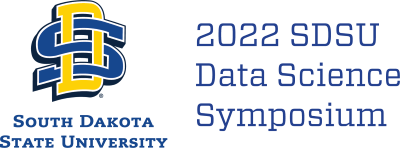Session 7: Tweedie Mixed Models for Spatial Transcriptomics and Digital Pathology
Presentation Type
Invited
Track
Other
Abstract
A key analytic task in spatial transcriptomics studies is to identify genes that display spatial expression (SE) patterns, commonly referred to as SE genes, similar in spirit to popular differential expression (DE) analysis. Here we propose spatial Tweedie mixed models based on a self-adaptive Tweedie distribution that flexibly captures a large dynamic range of observed spatial transcriptomics expression profiles. To properly account for the unique characteristics of spatially resolved transcriptomics data, we propose a two-part joint model: (i) a Gaussian process (GP) regression for modeling spatial changes in gene expression, and (ii) an over-dispersed Tweedie model for modeling expression values that captures over-dispersion through a nugget (white noise) term in the underlying GP covariance function. Empirical evidence of the attractiveness of the method is demonstrated via extensive simulation studies and real data analysis. We also apply our method to structurally similar digital pathology data thus providing a unified modeling framework for spatial molecular profiles.
Start Date
2-8-2022 11:00 AM
End Date
2-8-2022 12:00 PM
Session 7: Tweedie Mixed Models for Spatial Transcriptomics and Digital Pathology
Dakota Room 250 A/C
A key analytic task in spatial transcriptomics studies is to identify genes that display spatial expression (SE) patterns, commonly referred to as SE genes, similar in spirit to popular differential expression (DE) analysis. Here we propose spatial Tweedie mixed models based on a self-adaptive Tweedie distribution that flexibly captures a large dynamic range of observed spatial transcriptomics expression profiles. To properly account for the unique characteristics of spatially resolved transcriptomics data, we propose a two-part joint model: (i) a Gaussian process (GP) regression for modeling spatial changes in gene expression, and (ii) an over-dispersed Tweedie model for modeling expression values that captures over-dispersion through a nugget (white noise) term in the underlying GP covariance function. Empirical evidence of the attractiveness of the method is demonstrated via extensive simulation studies and real data analysis. We also apply our method to structurally similar digital pathology data thus providing a unified modeling framework for spatial molecular profiles.

